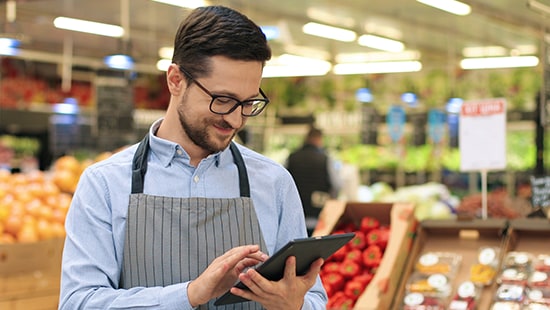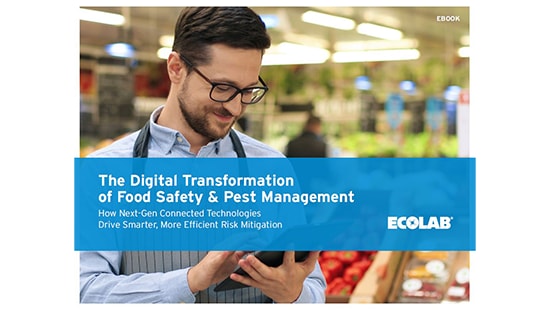Industry 4.0 for Food Safety
Pest Press Newsletter

In 1765, the first industrial revolution transformed the economy from agriculture to industry driven by the use of coal for energy. A century later, a second industrial revolution developed based on the discovery of electricity, gas and oil. It was again a full century before the third industrial revolution arrived in 1969, driven by electronics as well as nuclear energy.
Though we’re well short of the century mark, we are now in the midst of a fourth industrial revolution, “Industry 4.0,” a revolution that is powered by data-analytics. Defined as “the digital transformation of manufacturing/production and related industries and value-creation processes,” Industry 4.0 is about integrating next-generation connected technologies that continuously collect data, and use analytics to make sense of, and make use of, the data.
As direct-to-consumer businesses, food service and food retail gain benefits from digitization for all sides of the business:
- Incoming goods. With many businesses throughout the food supply chain already integrating connected technologies, the end-consumer businesses have options for supply-chain food safety data collection.
- In-store. Connected technologies enhance visibility into all aspects of the business, allowing for increased risk analysis and prioritization, and enabling a data-driven approach to optimizing resource allocation.
- Consumers. Digitalization can collect data on consumer behavior enabling ongoing trend analysis for product supply optimization and smart marketing.
Food Safety Benefits. Beyond such supply-to-consumer benefits, enhanced digitalization can significantly decrease food safety risks – including that of pest contamination – for the foodservice and food retail industries.
As a 24/7/365 challenge, food safety requires constant monitoring and diligence to juggle the multiple inputs, human-factor challenges, and other food safety risks across the establishment. The risks existed well before any of the industrial revolutions; but with Industry 4.0, businesses are able to solve the continuous-monitoring challenge by leveraging next-generation connected technologies.
With both rodent and insect pests being known vectors of foodborne illness pathogens, the use of digitalization in integrated pest management can be a powerful tool. For example, continuous remote pest monitoring devices not only track the activity of pests, but provide data-driven alerting and risk prioritization, as well as advanced prescriptive analytics insights.
The use of such devices essentially provides an extra set of “eyes and ears” in establishments and throughout the operation in real time — enabling a smarter, more efficient, more effective approach to pest risk reduction.


